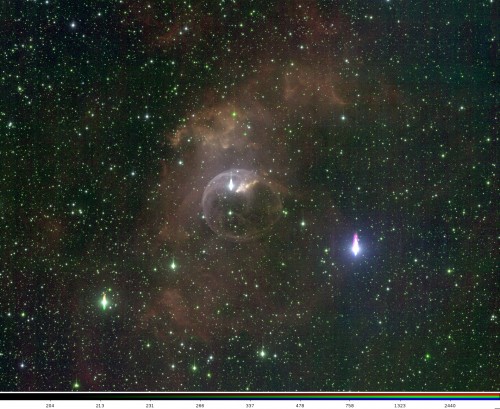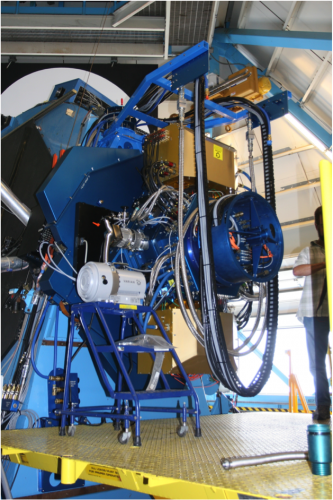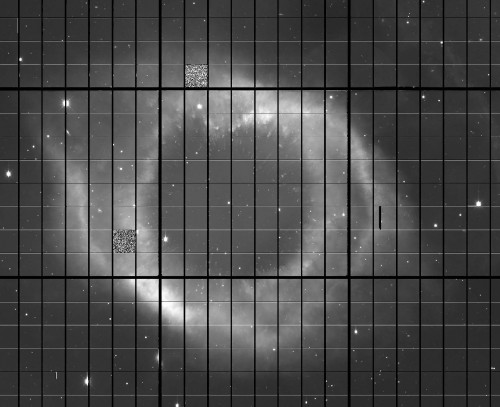
The WIYN Consortium, which consists of the University of Wisconsin, Indiana University, Yale University, and the National Optical Astronomy Observatory, has begun testing the One Degree Imager camera (ODI) on the WIYN telescope at the Kitt Peak National Observatory in Arizona. If the tests are successful, the camera will significantly improve our ability to capture images of the magnificent areas that lie beyond our planet.
Like most digital cameras, ODI utilizes CCD sensors, devices that convert light to charges and charges to digital values. Unlike most digital cameras, however, ODI contains a very large number of CCDs; there are a total of sixty-four CCDs on its focal plate. As a result, ODI is capable of capturing images as large as two gigabytes. (As a reference, a ten-megapixel camera with normal JPEG compression typically captures three-megabyte images.) Nonetheless, while the large number of CCDs in ODI is interesting, what truly makes the CCDs in ODI novel is their ability to move.

To understand why orthogonal transfer CCDs (the formal name for the special class of CCDs used in ODI) have such profound implications for astronomical imaging, it is necessary to understand the concept of refraction. Light travels at different speeds through different mediums. As a result, when we look at an object through a medium with varying refraction indices, the object appears blurred. Because each light ray moves along a slightly different path, the light rays do not converge perfectly, making it hard to focus the object. This phenomenon describes both why sources of light appear fuzzy when we look at them from underwater and why stars appear to twinkle when we look at them through Earth’s atmosphere.
Orthogonal transfer CCDs overcome this issue by moving to capture incoming photons. Marla Geha, an Associate Professor of Astronomy at Yale, likens the process to “a bucket catching water droplets.” Assuming that the water droplets are falling from slightly different locations, moving the bucket to catch the droplets will result in a greater amount of collected water than leaving the bucket in place. This comparison simultaneously elucidates a second benefit of orthogonal transfer CCDs. Not only do they facilitate the focusing of images, but they also increase the visibility of faint objects by concentrating photons otherwise spread out over a larger area.

Professor Geha hopes to use ODI to obtain images of dwarf galaxies around the Milky Way. Because the galaxies are so spread apart and faint, ODI’s wide viewing angle and orthogonal transfer CCDs, respectively, will be incredibly helpful in accomplishing this goal.
While ODI has been attached to the WIYN telescope, its software is still being completed. Only thirteen of its sixty-four CCDs are currently being used for testing purposes. ODI is a project almost ten years in the making, and it will likely be another ten years before cameras like ODI are incorporated into more telescopes. Nonetheless, even though much work lies ahead, the future of ODI and astronomical imaging is truly exciting.
About the Author:
Arsalan Sufi is a freshman in Ezra Stiles College interested in Biomedical Engineering.
Acknowledgements:
The author would like to genuinely thank Professor Geha for taking the time to discuss ODI and for providing the majority of the information presented in this article.
